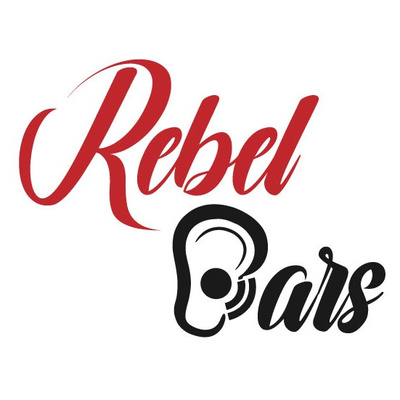Blog
Why Should you Care if Equalization Can Better your Mix
Every beautiful piece of music is made up of several moving parts. Each moving part is a process and all of our music passes through one or more of these processes before they eventually grace our speakers as hit records.
Think about each of these processes as you would think about refining of a crude material such as gold. In its original form, gold is not really desirable, but with the process of refining, all of the impurities are taken out. Music in its original state is crude, but the fine tuning process reveals the true beauty and gift behind each piece of music.
The standards used to qualify a quality piece of music today solely rests on the perfect execution of each refining processes. This article will therefore focus on equalization which, is an important process in turning raw music into pure gold.
In sound recording and music production, equalization is defined as the process of modifying the frequencies of an electronic signal in order to ensure that the signals are balanced. Equalization, or EQ for short, means boosting or reducing (attenuating) the levels of different frequencies in a signal. The most common use of equalization is in audio recording although, there are many other instances where equalization also proves very useful e.g., in telecommunication and electronics.
An electronic device known as an equalizer is used in the equalization process. An equalizer works by either weakening or strengthening the energy within a specific frequency range.
Equalization has unique applications, but the most basic application of equalization is with the treble/bass control on home audio equipment. The treble control modifies high frequencies while the bass control adjusts low frequencies. This application is for rudimentary adjustments as it only provides two controls for the entire frequency spectrum so, each control adjusts a fairly wide range of frequencies.
Equalization comes in handy for the correction of unnatural sound signals in audio production. For example, if a sound was recorded in a room which accentuates high frequencies, an equalizer will be used to normalize the frequencies. Equalization can also be used for applications such as making sounds clearer with reduced feedback.
In advanced equalization systems, the levels of frequency control are better fine-tune for specific adjustment purposes. The key is to be able to adjust a narrower range of frequencies without affecting other close frequencies.
Let us examine some common examples of equalizers.
COMMON EXAMPLES OF EQUALIZERS
Shelving EQ
Shelving equalization is used to boost frequencies above or below a certain point until all of the frequencies reach the same level. Eventually, the frequencies in the spectrum appear as though they are stacked over one another like objects in a shelf hence, the name shelving.
Bell EQ
Bell equalization boosts frequencies centered around a point. Each of the frequencies that can be boosted using Bell EQ have to fit a specific range, centered around a specific point. The effect of Bell EQ on each of the frequencies have maximum impact around the specific point and the least impact around frequencies farthest from the specific point.
Graphic EQ
Graphic equalizers are applied in a very careful manner to separate slider controls for different frequencies. Graphic EQ lays out each frequency in patterns to represent the frequency spectrum. Each slider can adjust one frequency band so, with more sliders, there will be more control.
Parametric EQ
Parametric equalizers operate in a similar way to Bell Equalizers, but parametric equalizers use knobs for the control of separate frequencies. Parametric equalizer knobs are found on some sound mixing consoles and some amplifier units (guitar amps, small PA amps) etc. The knobs are used to select which frequency is to be adjusted.
COMMON APPLICATIONS OF EQUALIZERS
Equalizers are used for various reasons ranging from improving sound to creating a brilliant mix room. There are however three popular reasons why equalizers are used in sound recording and audio production. They include:
Correcting flaws in sound/audio recording – An equalizer can be used to compensate for shortcomings in a sound pickup or to reduce unwanted sounds, such as noise.
Enhancing the clarity of sound from musical instruments – Equalization can help enhance an instrument’s sound.
Creating space and stability of sound frequencies – The equalizer can be useful for creating space in the mix by balancing frequencies. If certain instruments occupy a similar frequency band they will mask each other within that particular area of the audio spectrum, often resulting in a muddy sound.
EQUALIZATION AND THE AUDIBLE FREQUENCY BANDS
The audio spectrum is the audible frequency range at which humans can hear sound. It spans from 20 Hz to 20,000 Hz or 20 KHz. It can be effectively broken down into seven different frequency bands, with each band having a different impact on the total sound heard.
The seven frequency bands are:
Sub-bass – covers 20 to 60 Hz frequencies and it is the lowest recording frequency that can be used in sound recording. The deep bass produced in this range is usually more intense when heard. The deep bass produced in the sub-bass frequency is usually regarded as powerful. Many musical instruments struggle to enter the sub-bass frequency range, with the exception of a few bass-heavy instruments, such as the bass guitar which has the lowest achievable pitch of 41 Hz.
The sub-bass frequency requires little to no equalization boost especially when there are no available high-quality monitor speakers. Too much boost in the sub-bass range can make the sound overly powerful, whereas too much cuts will weaken and thin out the sound.
Bass – The Bass frequency band ranges between 60 to 250 Hz. It determines the quality of
sound in a recording as the fundamental notes of the rhythm are usually centered around this
frequency range. Most bass signals in modern music tracks lie around the 90-200 Hz area. The
frequencies around 250 Hz can add a feeling of warmth to the bass without loss of definition.
Low midrange – The low midrange covers frequency between 250 to 500 Hz. It contains the low
order harmonics of most instruments and is generally viewed as the bass presence range.
Boosting a signal around 300 Hz adds clarity to the bass and lower-stringed instruments in any
recording. Too much boost around 500 Hz can make higher-frequency instruments sound
muffled.
Midrange – The midrange overs frequency bands between 500 Hz to 2 KHz. It determines the
prominence of an instrument in a sound mix. Boosting around 1000 Hz can give instruments a
horn-like quality. Excess output at this range can sound tiny and may cause ear fatigue. When
boosting sound in this range, one has to be very cautious, especially on vocals.
Upper midrange – The upper midrange frequency covers ranges between 2 to 4 kHz. The human
ear is extremely sensitive at the high midrange frequencies, and the slightest boost can result in
a huge change in the sound’s timbre. The high midrange affects percussive and rhythm
instruments. If boosted, this range can add presence. However, too much boost around the 3
kHz range can cause listening fatigue.
Presence – Presence covers the 4 kHz to 6 kHz range. The presence range is responsible for the
clarity and definition of a sound. It is the range at which most home stereos center their treble
control. Over-boosting can cause an irritating, harsh sound. Cutting in this range makes the
sound more distant and transparent.
Brilliance – Brilliance is the highest frequency range. It covers 6 kHz to 20 kHz. The brilliance
range is composed entirely of harmonics and is responsible for sparkle. Boosts in the brilliance
range around 12 kHz makes a recording sound more Hi-Fi, but over boosting in this region can
generate hisses and cause ear fatigue.

